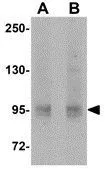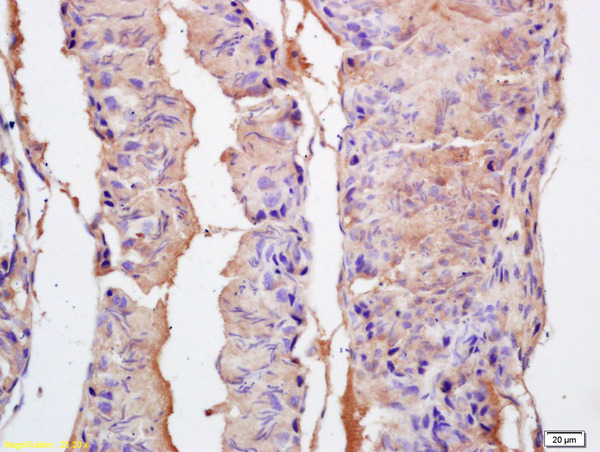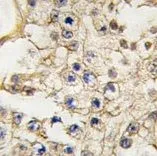
WB analysis of 293 cell lysate using GTX85273 EphA10 antibody. Working concentration : (A) 1 and (B) 2 microg/ml
EphA10 antibody
GTX85273
ApplicationsWestern Blot, ELISA
Product group Antibodies
TargetEPHA10
Overview
- SupplierGeneTex
- Product NameEphA10 antibody
- Delivery Days Customer9
- Application Supplier NoteWB: 1 - 2 microg/mL. *Optimal dilutions/concentrations should be determined by the researcher.Not tested in other applications.
- ApplicationsWestern Blot, ELISA
- CertificationResearch Use Only
- ClonalityPolyclonal
- Concentration1 mg/ml
- ConjugateUnconjugated
- Gene ID284656
- Target nameEPHA10
- Target descriptionEPH receptor A10
- Target synonymsDFNA88, ephrin type-A receptor 10, EphA10s protein
- HostRabbit
- IsotypeIgG
- Protein IDQ5JZY3
- Protein NameEphrin type-A receptor 10
- Scientific DescriptionEph receptors, the largest subfamily of receptor tyrosine kinases (RTKs), and their ephrin ligands are important mediators of cell-cell communication regulating cell attachment, shape, and mobility of neuronal and endothelial cells in central nervous system function and in development. Eph receptors can be divided into two subgroups: EphA and EphB. In mammals, the EphA class consists of eight members (EphA 1-7 and 10) that in general bind to ephrin-A members linked to the cell membrane through a glycosylphosphatidylinositol linkage. The EphB class consists of six members (EphB 1-6) that in general bind ephrin-B members that transverse the cell membrane. The Ephrin / EPH signaling pathway networks with the WNT signaling pathway during embryogenesis, tissue regeneration, and carcinogenesis. Recent studies show that Eph/EFN might be relevant in normal B-cell biology and could represent new potential prognostic markers and therapeutic targets for CLL.
- Storage Instruction-20°C or -80°C,2°C to 8°C
- UNSPSC12352203






![ELISA analysis of antigen using GTX60439 EphA10 antibody [2E8]. Red : Control antigen 100ng Purple : Antigen 10ng Green : Antigen 50ng Blue : Antigen 100ng](https://www.genetex.com/upload/website/prouct_img/normal/GTX60439/GTX60439_20170912_ELISA_w_23061123_279.webp)
